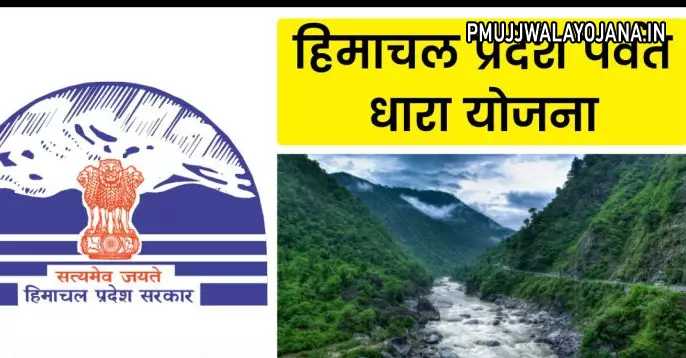HP Parvat Dhara Yojana is a special project by the Himachal Pradesh government focused on collecting, managing, and protecting water resources across the state. Right now, this scheme is running as a pilot in all 10 forest divisions except Lahaul and Spiti. Since Himachal Pradesh is a hilly region, experts warn that if water is wasted like before, groundwater levels will drop sharply, causing water shortages for people in the future.
The main goal of HP Parvat Dhara Yojana 2025 is to fix this serious issue by improving groundwater conditions and developing water sources. Keep reading to know more about this important government scheme and how it plans to support water conservation in Himachal Pradesh.

Overview of Himachal Pradesh Parvat Dhara Yojana 2025
The Himachal Pradesh government started HP Parvat Dhara Yojana to increase groundwater levels by taking care of water resources. The plan includes building small and big water storage structures like ponds, check dams, and contour trenches in sloped farming areas and forests to improve water supply.
This scheme is active as a pilot in 10 forest divisions of the state. Under it, 110 small ponds, 600 check dams and walls, and 12,000 contour trenches will be developed. Besides, tree planting activities will support the environment. The total budget set for this scheme is Rs. 2.76 crore. The Water Resources Department manages the program with close help from the Forest Department, since about two-thirds of the state is forest and around 27% covered with green plants.
Main Points About HP Parvat Dhara Yojana
| Scheme Name | HP Parvat Dhara Yojana |
| Launched By | Chief Minister Shri Jai Ram Thakur |
| Related Departments | Forest Department & Water Resources Department |
| Objective | To increase water levels in forest areas |
| Benefits | Making sure there is enough water for irrigation in forest lands |
| Budget | Rs. 2.76 Crore |
| Scheme Coverage | 10 Forest Divisions in Himachal Pradesh |
| Official Website | http://himachalpr.gov.in/ |
Forest Divisions Covered Under HP Parvat Dhara Yojana 2025
All 10 forest divisions except Lahaul and Spiti are part of this scheme. These divisions are:
- Bilaspur
- Hamirpur
- Parvati
- Nahan
- Rajgarh
- Nalagarh
- Thiyog
- Nurpur
- Jogindernagar
- Dalhousie
Purpose of HP Parvat Dhara Yojana 2025
Chief Minister Shri Jai Ram Thakur launched the HP Parvat Dhara Yojana mainly to raise groundwater levels and save water in the state. The scheme focuses on creating water collection systems for irrigation in sloped farming areas of forests, where most water is needed. Building ponds, check dams, walls, and contour trenches will help store water, stop soil erosion, and keep groundwater levels healthy.
Currently, this project is a pilot in 10 districts including Bilaspur, Hamirpur, Jogindernagar, Nahan, Parvati, Nurpur, Rajgarh, Nalagarh, Yog, and Dalhousie. Here, both small and large water storage systems will be built and taken care of to make sure water is available for farming and forest areas.
Main Features of HP Parvat Dhara Yojana
- Started by Himachal Pradesh Chief Minister Shri Jai Ram Thakur.
- Running as a pilot in 10 districts excluding Lahaul and Spiti.
- Two-thirds of the state is forest area, with 27% covered by green vegetation.
- A total budget of Rs. 2.76 crore is set for the scheme.
- The Water Resources Department leads the project with help from the Forest Department.
- Focuses on collecting, managing, and protecting water sources in the state.
- Includes tree planting to keep the environment healthy.
Benefits of HP Parvat Dhara Yojana 2025
- Supports water conservation in important forest divisions like Bilaspur, Hamirpur, Jogindernagar and others.
- Makes possible the building of 110 ponds, 600 check dams and walls, and 12,000 contour trenches.
- Helps protect soil and save water for long-term supply.
- Brings back dying water sources and improves irrigation in hilly farming lands.
- Takes care of water structures to provide continuous water supply.
How HP Parvat Dhara Yojana Will Improve Water Levels
The government will build many small and big ponds, check dams, and walls to keep water in the soil longer. This will improve groundwater recharge and water available for farming and forests. Protecting water and soil this way will make sure local people have enough water for irrigation and daily use, stopping future shortages.